Working in terrain that straddles social possibilities and aesthetic innovation, Jeremiah Hulsebos-Spofford has carved out an uncommon practice that assembles unique methods of collaboration while simultaneously investigating new methods of production and installation. This week the COMP Magazine caught up with Husebos-Spofford at his Mana studio in Pilsen to discuss his early encounters with public art out east, his Fulbright Fellowship experience in Sicily, Italy, the ongoing series, Floating Museum, and the upcoming project being produced for the CTA.
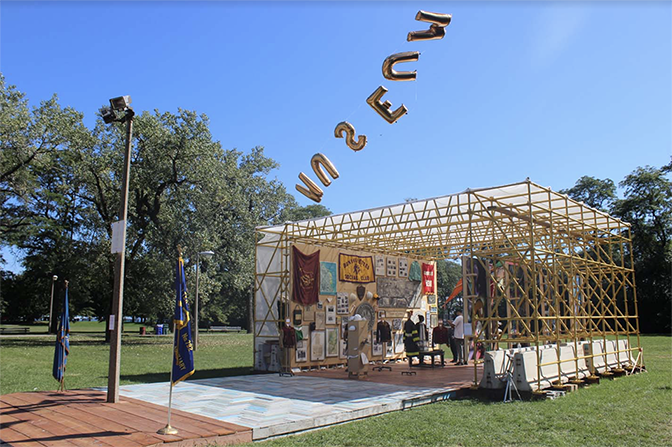
Floating Museum, 2016, Calumet, with Faheem Majeed and Andrew Schachman, partners included the Southeast Historical Society, Chicago Park District, SkyArts, artists included Roman Villareal, practice boards by XMen,
Ground Cover by Dan Peterman, Nicolas Henry
I’m fascinated by your personal trajectory and how it relates to your investigations in terms of the interrelation of aesthetic and social practices. You are from out east, studied at Bard College, and landed in Chicago to study at UIC. Do you recall any early experiences or individuals that you see as prompting your present investigations?
I grew up in a small town in Vermont – the sort with a general store, fire station, post office and gently rolling green spaces. Vermont’s an interesting place due to the large influx of hippies during the 60’s mixed with families who’ve been living there for generations. I worked lots of jobs in high school on farms, building houses, at a pizza parlor and an apprenticeship with an acclaimed wood artist named Michael Mode. I remember being struck that it’s very common for Vermonters to have many gigs; for instance Frank the plumber on one of my job sites was also a poet obsessed with Leonard Cohen, always quoting song fragments including ‘the cracks are where the light shines in.’
When I was at Bard I co-founded a non-profit that did art workshops nationally and internationally in Southeast Asia, South America and West Africa. This had a huge impact on my current thinking about the social possibilities for art. But one particularly pivotal moment came late one night when I had snuck into the art departments woodshop to make cutting boards to sell on parents weekend (to pay my apartment rent check.) Judy Pfaff, the chair of the art department caught me making the cutting boards and we made a deal that I could finish them up if I agreed to take an art class. I didn’t know it then but she had just won a MacArthur genius grant and would later become my advisor.
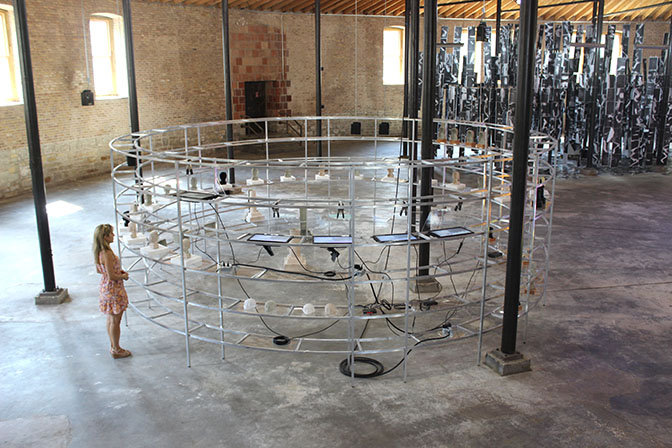
Floating Museum : Echo Location, 2017, with Andrew Schachman, Faheem Majeed and Avery R Young
Your knowledge and articulation in the Italian language caught me a bit off guard, this brought an unsuspecting smile. In 2009 you received a Fulbright Fellowship to teach and work in Sicily, Italy. Can you offer insight on this experience?
I was lucky to have the opportunity to work as a Fulbright Scholar for a year in Italy and it was incredible to focus on work directly after grad school and be immersed in a new culture. I really recommend applying – the program is all over the world and artists don’t need to be affiliated with a school. I spent a couple months working on a piece on the Tiber River just north of Rome and the rest of the fellowship living and working in Palermo, Sicily. In Sicily I carried out a project that spanned teaching art in partnership with an organization serving a predominantly immigrant community, studying traditional boat building, and staging a reenactment of Ulysses escaping from the Cyclops Polyphemus on a large-scale floating sculpture. Research included notions of futile heroics, the politics of exploration/conquest, armchair travelers and their psycho-geographies of the Odyssey, as well as the interstitial spaces created by contact between cultures. My wife Veronica Vegna grew up in Palermo and during my fellowship year that was where our daughter Syria was born. So it was a productive year!
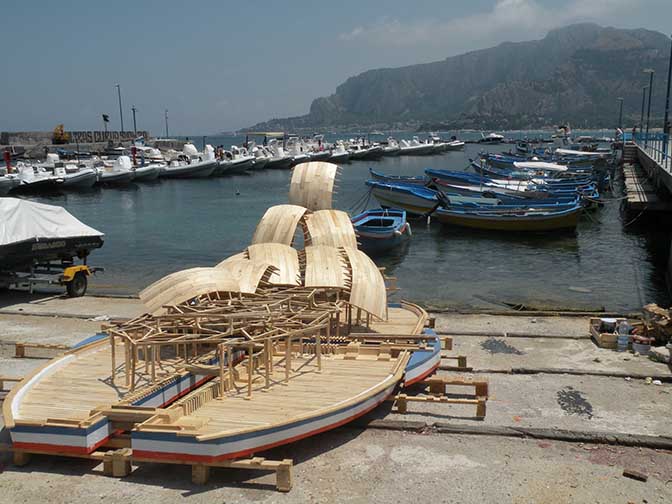
Jeremiah Hulsebos-Spofford
Ecclesiastes Rose, 2013
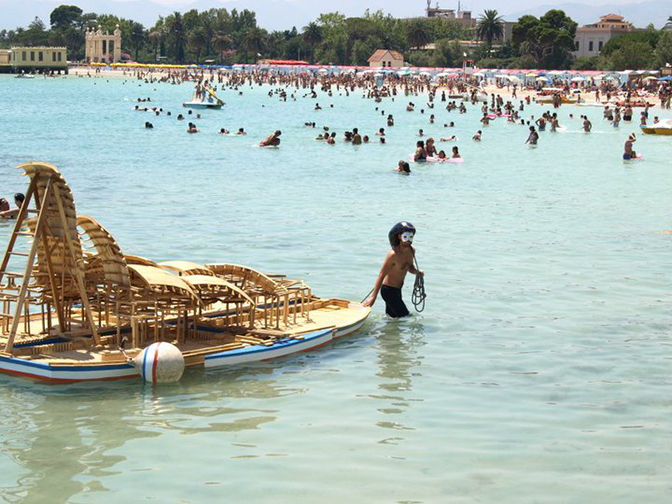
Jeremiah Hulsebos-Spofford
Ecclesiastes Rose, 2013
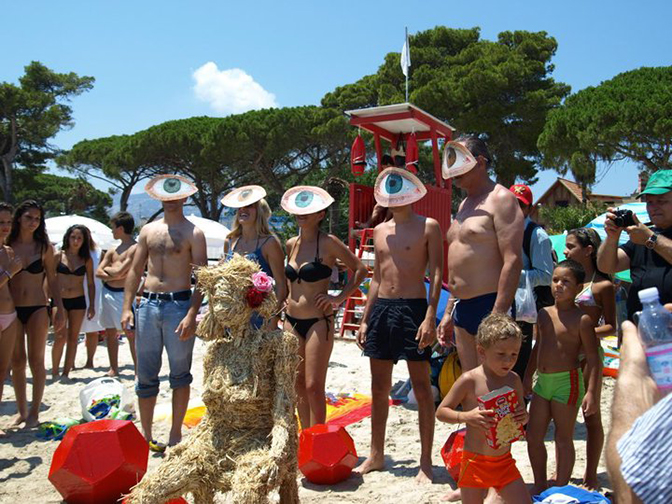
Jeremiah Hulsebos-Spofford
Ecclesiastes Rose, 2013
The Floating Museum has established itself as an instrumental format of presentation for varied communities. Floating Museum: River Assembly and similar iterations are utilizing non-tradition exhibition formats while advancing a more inclusive approach for viewing audiences. At present, you are working upon a project for the CTA. Can you describe the intent of this upcoming effort? What do you and your colleagues hope to accomplish in this project?
Floating Museum is an art collective that includes Andrew Schachman, Avery R Young, Faheem Majeed and myself. We’re working on a project called Cultural Transit Assembly in partnership with the Chicago Transit Authority and Chicago Park District to transform the Green Line into a moving cultural destination from August 2018 – September 2019, activating several parks along the south and west ends of the line. We’re developing site-specific exhibitions that highlight local histories with complimentary public programs including live musical performances, panel discussions, neighborhood walking tours, and more. Cultural Transit Assembly consists of five main elements: a modified train car gallery on the CTA Green Line and activations in four parks next to the tracks including Austin Town Hall Park, Garfield Park, Grant Park, and Washington Park/South Branch. We just kicked off our first event in Grant Park, reassembling a photo by Peter Bullock from 1968 of protesters during the DNC convention protests. The project is another model after our work on the river to expand the frame of museum beyond more conventional brick and mortar models.
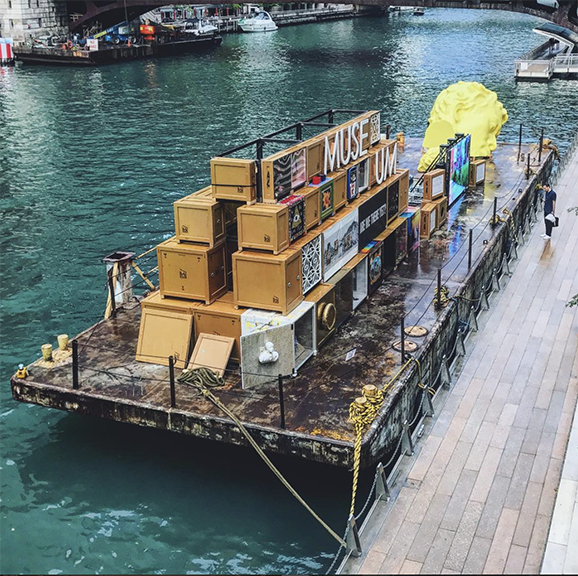
Floating Museum: River Assembly, 2017
Public art project and exhibition by Andrew Schachman, Avery r Young,
Faheem Majeed and Jeremiah Hulsebos-Spofford
Your practice, at times, works with new technology (e.g., 3-D printing) while referencing artworks that are associated with the antiquities. For instance, in the Gipsotecas series, you work with contemporary materials while using iconography that is distinctly from a previous period of history. Can you share with us your selection process? Where do you see the past converging with the present?
I’ve been interested in looking at history as a way to think about our contemporary moment and wonder about future possibilities for form, social structures and redistribution of power. I’m really interested in the technology of making, from our hands to hammers and chisels, 3d printing and industrial casting processes. I’m working on a new series taking Italian cast museums or Gipsoteca as a starting point to explore the copy in our current moment. The selections and research are ongoing at the moment but some include popular neoclassical garden sculptures, Mr. Coffee coffee makers, the Soviet sculptor Vera Mukhina and how to materialize mass experienced and participated in content online.
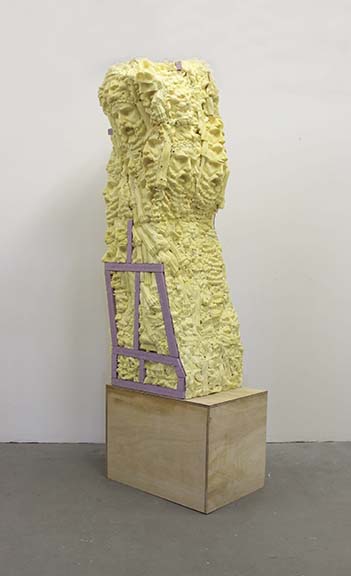
Jeremiah Hulsebos-Spofford
Garden Gipsoteca Hercules, 2016
In addition to your professional practice, you teach. This fall you will begin teaching sculpture at Indiana University Northwest. I’m curious if there are any specific ideas or items you see as essential in sharing with your students?
Well I’m partial to sculpture. I think it’s an absolute gateway drug to visual culture, art history and critical sensitivity. Because we have our bodies and we move them around in three dimensional space, touch things, see things and relate in this space, sculpture and all of its expanded forms, processes and activities is one of the most exciting and boundary blurring mediums out there. I also share this review of a Brancusi sculpture exhibited in the 1913 Armory Show in Chicago with every new class to start an ongoing class discussion about changing tastes, subjective positions and one of art history’s greats having a very bad press day:
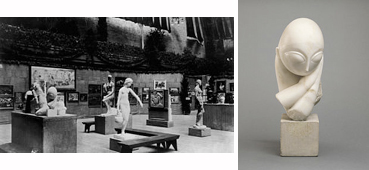
In Arts Revolutionists of Today (1913), the caption for this
photo reads: “At the left of the picture is a much-
discussed portrait bust of Mlle. Pogany, a dancer, by Brâncuși. This freak sculpture resembles nothing so much as an egg and has excited much derision and laughter…
Where is Floating Museum presently in terms of the CTA project? When does this project launch? What additional activities are on the horizon? Are there any projects or exhibitions you hope to realize by the end of the year?
We just launched our first event of Cultural Transit Assembly at the Logan Monument downtown on August 26th. Next up includes a panel discussion series in the Chicago Park District, inflatable sculptures next to the train track in Bronzeville and Washington Park in October and more next year. You can follow the project online at www.floatingmuseum.org. I’m also working on a solo project at the Arts Club of Chicago opening in April 2019.
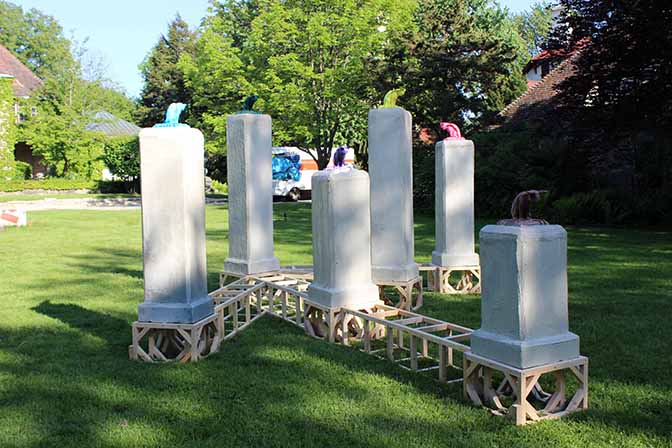
Jeremiah Hulsebos-Spofford
Networked Cat Monument, 2013
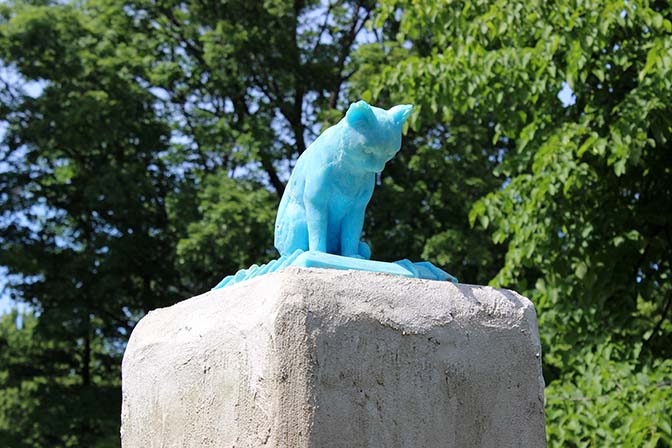
Jeremiah Hulsebos-Spofford
Networked Cat Monument, 2013
For additional information on the aesthetic practice and Public Art of Jeremiah Hulsebos-Spofford, please visit:
Jeremiah Hulsebos-Spofford – http://www.jhspofford.com/
Art World Chicago – https://artworldchicago.com/2013/04/25/jeremiah-hulsebos-spofford-at-hyde-park-art-center/
Chicago Reader – https://www.chicagoreader.com/chicago/floating-museum-river-assembly-faheem-majeed-jeremiah-hulsebos-spofford/Content?oid=28884091
Chicago Tonight – https://chicagotonight.wttw.com/2014/12/02/sending-history-river
City of Chicago – https://www.cityofchicago.org/city/en/depts/dca/supp_info/air0.html
Floating Museum – https://floatingmuseum.org/
Harpo Foundation – http://www.harpofoundation.org/jeremiah-hulsebos-spofford-hyde-park-art-center/
Next City – https://nextcity.org/daily/entry/chicago-floating-museum
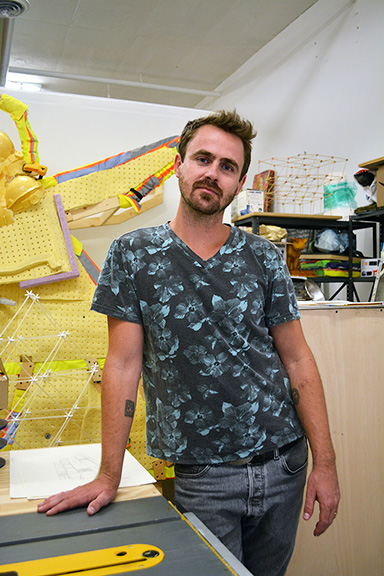
Jeremiah Hulsebos-Spofford, artist, Chicago, 2018
Artist interview and portrait by Chester Alamo-Costello


